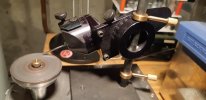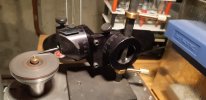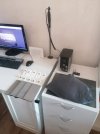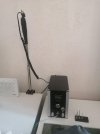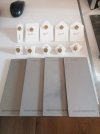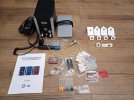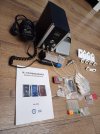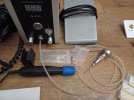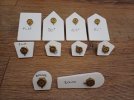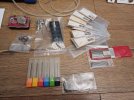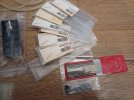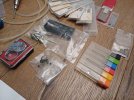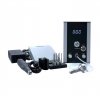rweigel
Elite Cafe Member
As I dug out my sharpening templates for this thread, it remined me of a method I devised (and somebody else might have devised as well) to hone a defined radiused heel onto flat gravers.
I do the same today with two adjustable stoppers on the post of the dual angle fixture, the top one set such that I could not go higher than the desired heel angle, and the lower one set to 5 degrees or so. The stoppers have to be set for each graver sharpening individually as their position depends on the length of the graver. Just leave the tool post angle loose, set the graver‘s heel onto the honing disc, go up to e.g. 20°, fix the top stopper such that it limits the movement further up, go down to 5°, fix the lower stopper accordingly. Now move the graver harmonically between the two stops, thus honing a radiused heel onto it.
Cheers
Ralf
I do the same today with two adjustable stoppers on the post of the dual angle fixture, the top one set such that I could not go higher than the desired heel angle, and the lower one set to 5 degrees or so. The stoppers have to be set for each graver sharpening individually as their position depends on the length of the graver. Just leave the tool post angle loose, set the graver‘s heel onto the honing disc, go up to e.g. 20°, fix the top stopper such that it limits the movement further up, go down to 5°, fix the lower stopper accordingly. Now move the graver harmonically between the two stops, thus honing a radiused heel onto it.
Cheers
Ralf


